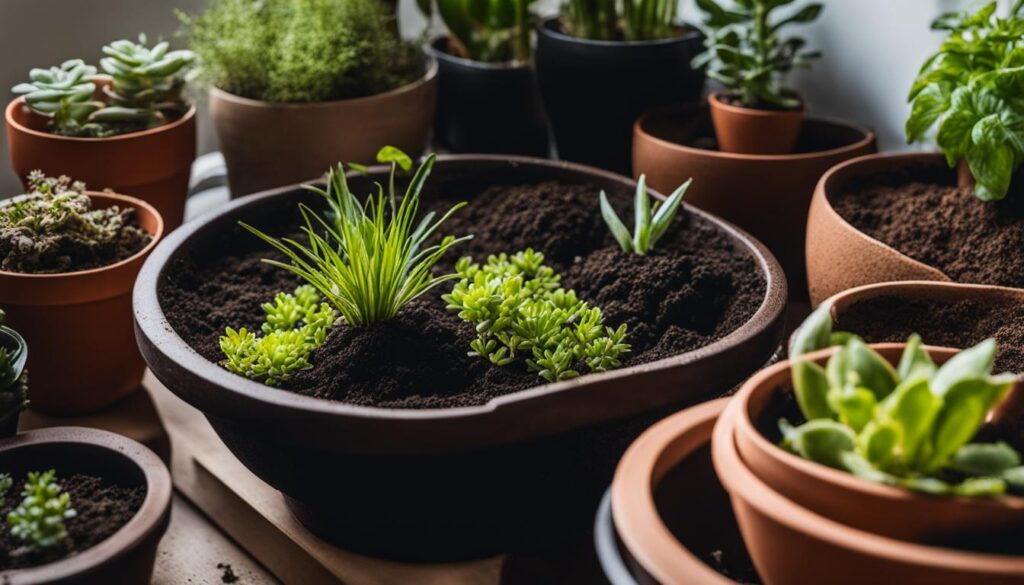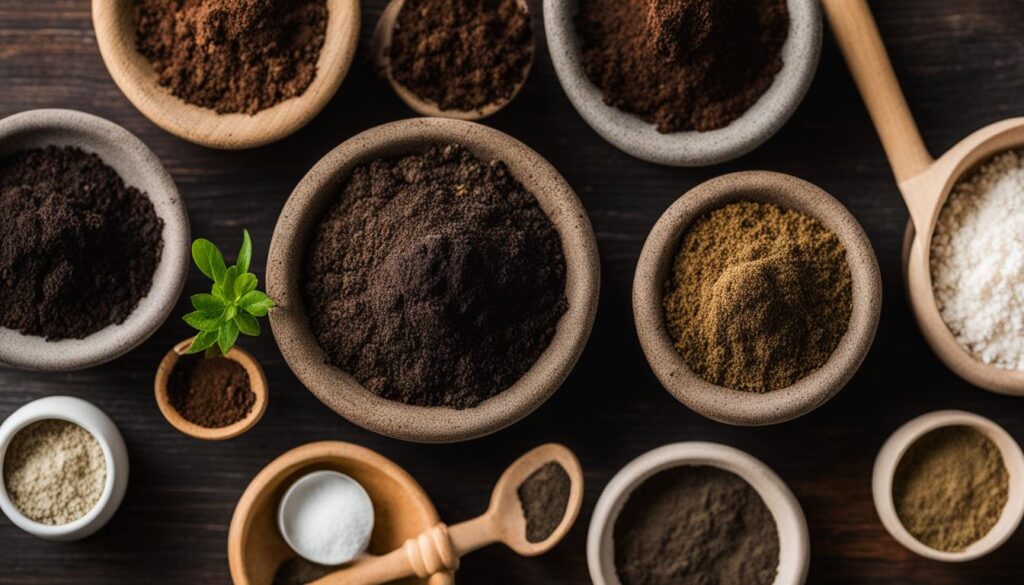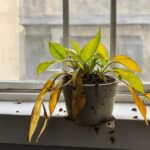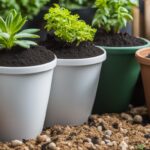Perfect Soil Mix Ratio for Indoor Plants, How to Prepare or Make DIY Easy, Cheap Organic Potting Soil, Universal Potting Mix for Houseplants
As a plant lover, I understand the importance of providing the right balance of nutrients, water, and aeration for optimal plant growth. In this guide, I will explain the process of creating the ideal soil mix for your houseplants, ensuring they thrive and flourish in their indoor environment and the Perfect Soil Mix Ratio for Indoor Plants.

When it comes to indoor plants, having the correct soil mix ratio is crucial. It provides the foundation for their overall health and well-being. By using high-quality potting soil and understanding the factors that contribute to an effective soil mix, you can create an environment that supports your plants’ growth and vitality.
Throughout this article, I will share insights on the importance of using quality potting soil, the factors to consider when preparing an indoor soil mix, and why it’s best to avoid using outdoor soil for indoor plants. I will also highlight the role of compost and essential soil amendments in the potting mix, along with a step-by-step guide on how to prepare the soil mix yourself.
By the end of this article, you will have the knowledge and confidence to create a homemade soil mix that perfectly caters to the needs of your indoor plants. So, let’s dive in and learn how to prepare the perfect potting mix for your beloved houseplants.
You can also read How to Get Rid of Spider Mites
Importance of Using Quality Potting Soil for Houseplants
When it comes to indoor plants, using quality potting soil is most important. The right soil mix provides the foundation for healthy and thriving houseplants. Unlike garden plants that have access to natural resources, indoor plants rely mostly on the soil in their pots for nutrients and moisture. Therefore, it is essential to choose the best soil for plants in pots to ensure their overall well-being.
Adequate air circulation in the soil allows roots to breathe and prevents the buildup of excess moisture that can lead to oxygen deprivation. This is especially crucial for potted plants, as they are more prone to overwatering and poor drainage compared to their garden counterparts.
Benefits of Using Quality Potting Soil for Houseplants:
- Provides necessary support and stability for growth
- Retains moisture without becoming waterlogged
- Promotes proper root aeration
- Prevents root rot and fungal diseases
Investing in quality potting soil ensures that your indoor plants have the best foundation for healthy growth. Look for potting mixes specifically formulated for indoor plants, as they are designed to provide the right balance of nutrients, moisture retention, and drainage. Remember, the soil you choose plays a vital role in the overall success of your houseplants, so it is worth investing in the best soil for plants in pots.
Factors to Consider for an Effective Indoor Soil Mix
When it comes to creating the perfect soil mix for your indoor plants, there are several factors to consider. The soil mix ratio, ingredients, and overall composition play a crucial role in providing the optimal growing conditions for your plants. By understanding these factors, you can ensure that your indoor plants receive the necessary nutrients, water retention, aeration, and drainage for healthy growth.
One of the key considerations for an effective indoor soil mix is the soil mix ratio. This refers to the proportion of different ingredients in the mix. A balanced ratio is essential to provide the right combination of water retention and drainage. Aim for a mix that retains moisture without becoming waterlogged, allowing roots to access both water and oxygen. Different plants have different moisture requirements, so it’s important to research the specific needs of your indoor plants and adjust the ratio accordingly.
Another important factor is the selection of ingredients for your indoor soil mix. A high-quality potting soil is a good base, providing essential nutrients and aeration. However, it’s often necessary to add additional ingredients to optimize the mix. Common ingredients include perlite or vermiculite for improved drainage, compost for nutrient enrichment, and coconut coir or peat moss as moisture retainers. Consider the specific needs of your plants and choose ingredients that will provide the best growing conditions.
- Perlite or vermiculite for improved drainage
- Compost for nutrient enrichment
- Coconut coir or peat moss as moisture retainers
Key Factors to Consider for an Effective Indoor Soil Mix:
- Soil mix ratio for optimal water retention and drainage.
- Selection of high-quality ingredients.
- Adequate space for plant growth.
- The right balance of nutrients.
By considering these factors and customizing your indoor soil mix, you can create an ideal environment for your indoor plants to thrive. Remember to regularly monitor and adjust the moisture levels, and provide additional nutrients as needed. With a well-prepared soil mix, you’ll give your indoor plants the best chance to grow healthy and beautiful.
The Importance of Avoiding Outdoor Soil for Indoor Plants
When it comes to providing the best conditions for your indoor plants, using outdoor soil is not recommended. While it may seem convenient, outdoor soil can actually pose several risks to the health and well-being of your indoor plants.
One of the primary concerns with outdoor soil is the presence of microorganisms, pests, and unwanted organisms that can harm your plants. These can include harmful bacteria, fungi, and insects that can cause diseases and infestations. Using outdoor soil can introduce these pests and microorganisms into your indoor environment, making it difficult to control and eliminate them.
To ensure the optimal growth and health of your indoor plants, it is best to use a sterile indoor plant soil mix. This type of soil mix is specifically formulated to provide the right balance of nutrients, moisture retention, and drainage for indoor plants. By using a sterile soil mix, you can greatly reduce the risk of pests and diseases, allowing your plants to thrive in a controlled and healthy environment.
Advantages of Using Sterile Indoor Plant Soil Mix
- Controlled and healthy environment for plants
- Reduced risk of pests and diseases
- Proper nutrient balance for optimal plant growth
- Improved moisture retention and drainage
- Control over soil composition and quality
The Risks of Outdoor Soil for Indoor Plants:
- Introduction of pests and harmful microorganisms
- Difficulty in controlling and eliminating pests and diseases
- Unbalanced nutrient levels
- Poor moisture retention and drainage
- Lack of control over soil composition and quality
By avoiding outdoor soil and opting for a sterile indoor plant soil mix, you can provide the best conditions for your indoor plants to grow and thrive. Remember to always use high-quality ingredients and follow the recommended ratios to ensure the optimal health and well-being of your beloved houseplants.

The Role of Compost in the Indoor Soil Mix
Compost plays a vital role in creating a nutritious and well-balanced soil mix for your houseplants. It is a rich source of organic matter that provides essential nutrients like nitrogen, phosphorus, and potassium. Incorporating compost into your soil mix helps to improve soil structure, water retention, and microbial activity, contributing to the overall health and growth of your indoor plants.
When using compost in your indoor soil mix, it is important to choose high-quality compost that is free from pesticides, herbicides, and plastics. Look for compost that has been properly aged and fully decomposed, as unfinished compost can contain weed seeds and pathogens that can harm your plants. You can either purchase compost from a trusted supplier or create your own compost using kitchen scraps, yard waste, and other organic materials.
To ensure that the compost is sterile and free from harmful bacteria and pests, it is recommended to sterilize it before use. This can be done by heating the compost to a temperature of 160-180°F (71-82°C) for 30 minutes. Sterilizing the compost will kill any unwanted organisms while preserving beneficial microorganisms that contribute to healthy soil.
Benefits of Compost in the Indoor Soil Mix
| Benefit | Description |
|---|---|
| Nutrient-rich | Compost provides essential nutrients for plant growth, promoting healthy foliage and strong root development. |
| Improved soil structure | Compost helps to improve soil texture, enhancing water retention, drainage, and aeration. |
| Enhanced microbial activity | The organic matter in compost supports beneficial microbial activity in the soil, aiding in nutrient cycling and disease suppression. |
| Environmentally friendly | Composting reduces waste and landfill usage, promoting sustainability and environmental stewardship. |
By incorporating compost into your indoor soil mix, you can provide your houseplants with the essential nutrients they need while improving soil health and sustainability. Remember to choose high-quality compost, sterilize it if necessary, and follow the recommended ratios when preparing your soil mix for optimal plant growth.
Essential Soil Amendments for Indoor Plants
When it comes to providing the best-growing conditions for indoor plants, the right soil amendments can make all the difference. These amendments help improve the overall quality of the soil, ensuring that your plants receive the necessary nutrients, water retention, aeration, and drainage. In this section, I will discuss some essential soil amendments that you can incorporate into your indoor soil mix to promote healthy plant growth.
1. Sphagnum Peat Moss or Coconut Peat
Sphagnum peat moss is a popular ingredient in many potting mixes due to its water retention properties. However, if you’re looking for a sustainable alternative, coconut coir or composted bark can be used. These alternatives provide similar moisture retention capabilities and help create a well-draining soil mix for your indoor plants.
2. Worm Castings or Vermicompost
Worm castings, also known as vermicompost, are a rich source of organic matter and nutrients. They improve soil structure, enhance nutrient availability, and help retain moisture in the soil. Adding worm castings to your indoor soil mix can significantly benefit your plants and contribute to their overall health and vitality.
3. Perlite and Vermiculite
Perlite and vermiculite are lightweight soil amendments that improve aeration and moisture retention in the soil. Perlite is made from volcanic glass and helps prevent soil compaction, allowing roots to access oxygen more easily. Vermiculite, on the other hand, has excellent water-holding capacity, ensuring that your plants have access to consistent moisture. Combining these amendments in your indoor soil mix creates a well-balanced growing medium for your plants.
4. Sand
Adding sand to your indoor soil mix can improve drainage, especially when combined with organic materials. It helps create air pockets in the soil, allowing excess water to drain away more effectively. However, ensure that you use horticultural-grade sand, as other types of sand can contain impurities that may harm your plants.
By incorporating these essential soil amendments into your indoor soil mix, you can create an optimal growing environment for your plants. Remember to adjust the ratios based on the specific needs of your indoor plants to ensure their overall health and well-being.
| Soil Amendment | Function |
|---|---|
| Sphagnum Peat Moss or Coconut Peat | Provides water retention and improves drainage. |
| Worm Castings | Enhances nutrient availability and moisture retention. |
| Perlite and Vermiculite | Improves aeration and moisture retention. |
| Sand | Improves drainage. |
A DIY Houseplant Soil or Potting Mix Recipe
Creating your own houseplant soil mix is a cost-effective and customizable option that allows you to provide the ideal conditions for your indoor plants. By following a simple recipe, you can ensure that your plants receive the necessary nutrients, moisture retention, aeration, and drainage for healthy growth.
To make your own houseplant soil mix, you will need the following ingredients:
- Sterilized compost – provides essential nutrients
- Peat moss alternative (such as coconut coir or composted bark) – improves moisture retention
- Worm castings – enhance nutrient availability and moisture retention
- Perlite – promotes aeration and moisture retention
- Vermiculite – improves moisture retention
- Sand – improves drainage when combined with organic materials
Combine these ingredients in the following ratios:
| Ingredient | Ratio |
|---|---|
| Sterilized compost | 2 parts |
| Peat moss or coco peat | 1 part |
| Worm castings | 1 part |
| Perlite | 1 part |
| Vermiculite | 1 part |
| Sand | 1 part |
Thoroughly mix all the ingredients to ensure they are evenly distributed. Your homemade houseplant soil mix is now ready to use in potting your indoor plants.

Step-by-Step Guide for Preparing the Indoor Soil Mix
Creating the perfect soil mix for your houseplants is a simple and straightforward process. By following these step-by-step instructions, you can ensure that your indoor plants receive the ideal balance of nutrients, water retention, aeration, and drainage.
Gather the Ingredients
To prepare the indoor soil mix, gather the following ingredients: high-quality compost, peat moss alternative, worm castings, perlite, vermiculite, and sand. These components work together to provide the necessary nutrients and physical properties for healthy plant growth.
Measure and Mix
Once you have all the ingredients, measure them according to the recommended ratios. A common ratio for a homemade soil mix is 1 part compost, 1 part peat moss alternative, 1 part perlite, and 1 part vermiculite. Add a 1 part amount of worm castings and 1 part sand for added nutrient availability and drainage, respectively.
Combine the ingredients in a large container or bucket, and mix thoroughly to ensure an even distribution. Breaking up any clumps and ensuring all the components are well incorporated will result in a consistent and balanced soil mix.
Ready to Use
Once the soil mix is well-mixed, it is ready to be used for potting your indoor plants. Fill your pots or containers with the soil mix, leaving enough space for the roots of your plants to grow. Gently press the soil around the base of the plant to provide stability.
Remember to water your plants thoroughly after potting to ensure the soil settles and the roots make good contact with the soil mix. Regularly check the moisture levels and adjust your watering schedule accordingly to maintain optimal plant health.
Benefits of Homemade Houseplant Potting Mix
Creating your own homemade houseplant potting mix offers several advantages. By taking control of the ingredients used, you can ensure their quality and suitability for your indoor plants. This customization allows you to tailor the potting mix to meet the specific needs of your plants, promoting their health and overall well-being.
One of the primary benefits of a homemade houseplant potting mix is cost savings. By using easily accessible ingredients in bulk, you can significantly reduce the expense of purchasing pre-packaged potting soil. This can be especially beneficial if you have a large number of indoor plants or enjoy frequently repotting your green companions.
Another advantage of making your own potting mix is the freedom to choose high-quality ingredients. You can select compost, peat moss alternatives, and other amendments that are free from pesticides, herbicides, and plastics. This ensures that you provide a clean and safe environment for your indoor plants, minimizing the risk of exposure to harmful substances.
Lastly, making your own homemade potting mix allows you to experiment and find the perfect blend for your plants. You can adjust the ratios of ingredients to cater to different plant species or specific growth requirements. This level of customization gives you the confidence and satisfaction of knowing that your plants are getting the best possible soil mix for their optimal growth and vitality.
The Benefits of Homemade Houseplant Potting Mix at a Glance
- Cost-saving compared to pre-packaged potting soil
- Control over the quality and suitability of ingredients
- Customizable mix to meet the specific needs of your plants
- Reduces the risk of exposure to harmful substances
- Provides a clean and safe environment for indoor plants
Proper Storage of Homemade Potting Mix
After creating the perfect soil mix for your indoor plants, it’s essential to store any leftovers properly to maintain their quality for future use. When storing the homemade potting soil, ensure that the container is clean and free from any residues. This helps to maintain the quality of the potting mix and prevents the introduction of any contaminants. Label the container with the date of preparation to keep track of its freshness and ensure it is used within a reasonable timeframe.
| Airtight Container | Benefits |
|---|---|
| Five-gallon bucket or suitable container with a tight-fitting lid | Preserves moisture content |
| Prevents infestations | Maintains quality |
| Protects from pests and contaminants | Prevents damage |
Remember, indoor plant care goes beyond just watering and lighting. The soil mix plays a crucial role in providing the right conditions for your plants to flourish. So take the time to create a balanced potting mix that promotes water retention, aeration, and drainage.
FAQ
Why is using quality potting soil important for indoor plants?
Quality potting soil provides the necessary support, moisture retention, and drainage for indoor plants. It ensures that plants receive the required nutrients and promotes their overall health and growth.
Can I use outdoor soil for indoor plants?
It is not recommended to use outdoor soil for indoor plants. Outdoor soil can contain harmful microorganisms, pests, and unwanted organisms that can damage indoor plants. It is best to use a sterile indoor plant soil mix and provide nutrients through fertilizers specifically designed for indoor plants.
What role does compost play in the indoor soil mix?
Compost is a crucial ingredient in the indoor soil mix as it provides essential nutrients and enhances soil structure. It is important to use high-quality compost that is free from pesticides, herbicides, and plastics. Sterilizing the compost before use helps eliminate harmful bacteria and pests while retaining beneficial microorganisms.
What are essential soil amendments for indoor plants?
Essential soil amendments for indoor plants include sphagnum peat moss alternatives (such as coconut coir or composted bark) for moisture retention, worm castings for nutrient availability and moisture retention, perlite and vermiculite for aeration and moisture retention, and sand for drainage when combined with organic materials.
Can I make my own houseplant soil mix?
Yes, creating your own houseplant soil mix is an economical and customizable option. A simple DIY recipe includes sterilized compost, peat moss alternative, worm castings, perlite, vermiculite, and sand in specific ratios. This homemade potting mix provides the necessary nutrients, moisture retention, aeration, and drainage for healthy indoor plants.
How do I prepare the indoor soil mix?
The process of preparing the indoor soil mix involves obtaining or making high-quality compost, sterilizing it if necessary, and combining it with the other soil amendments in the recommended ratios. Thoroughly mix the ingredients to ensure even distribution. The resulting soil mix is now ready for use in potting your indoor plants.
What are the benefits of homemade houseplant potting mix?
Homemade houseplant potting mix allows for cost-saving by using easily accessible ingredients in bulk. It gives you control over the ingredients, ensuring their quality and suitability for your plants. Additionally, making your own potting mix allows you to tailor the mix to the specific needs of your indoor plants, promoting their health and well-being.
How should I store leftover homemade potting soil?
It is important to store any leftover homemade potting soil in an airtight container to prevent infestations and maintain its quality. The soil can be stored in a five-gallon bucket or any suitable container with a tight-fitting lid. Proper storage ensures that the potting mix remains free from pests, moisture, and contaminants until its next use.
Why is preparing the perfect soil mix important for indoor plants?
Investing time and effort into creating the perfect soil mix for your indoor plants is crucial for their optimal growth and health. By considering the specific needs of your plants and using high-quality ingredients, you can provide the necessary support, moisture, and nutrients for vibrant and thriving indoor plants.




